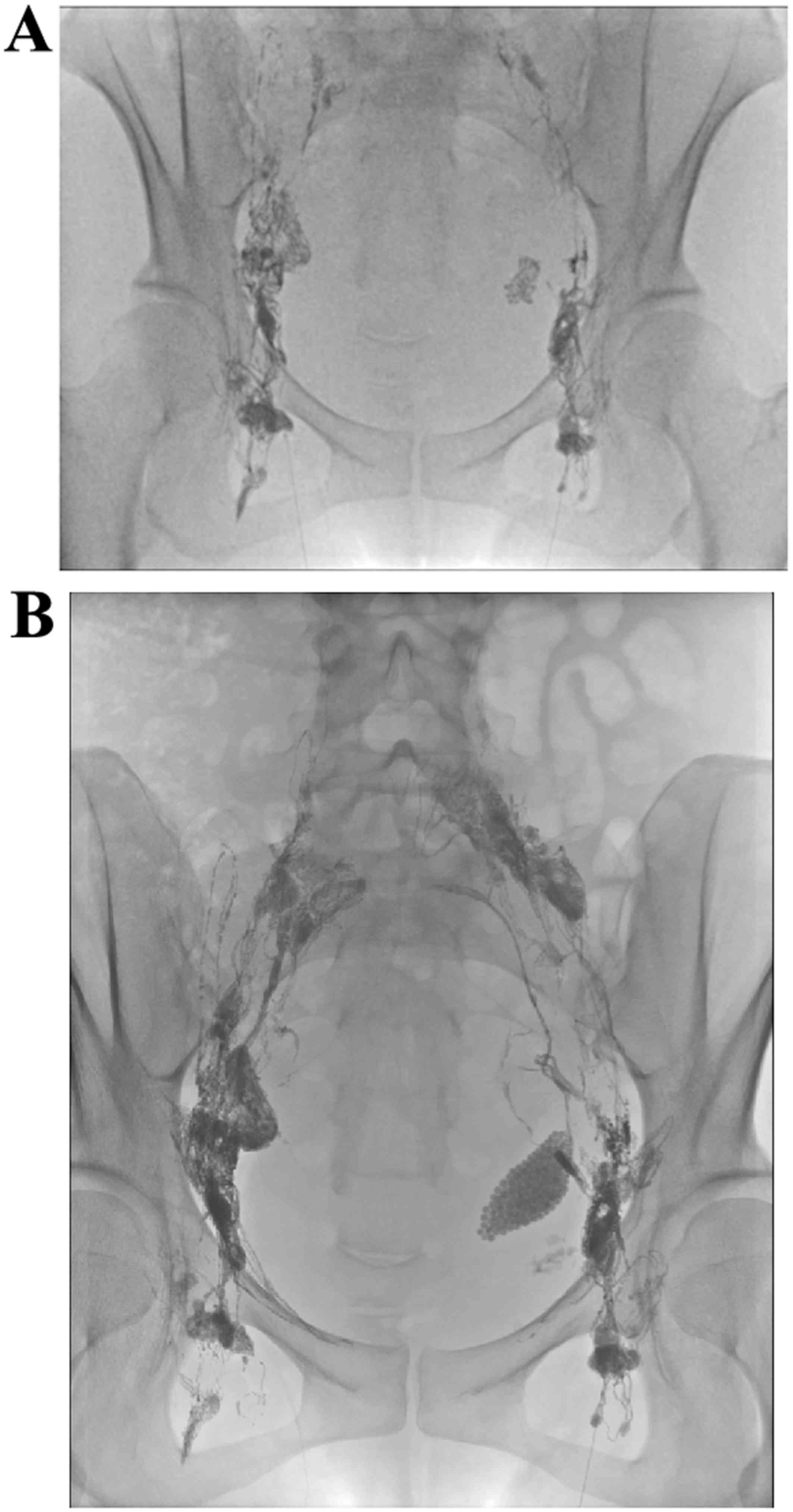Ultrasound-guided intranodal lymphangiography with lipiodol for treatment of chylous ascites following surgery for ovarian cancer: A case report
- Authors:
- Published online on: June 8, 2018 https://doi.org/10.3892/mco.2018.1647
- Pages: 178-180
-
Copyright: © Nakamura et al. This is an open access article distributed under the terms of Creative Commons Attribution License.
Metrics:
Total
Views: 0 (Spandidos Publications: | PMC Statistics:
)
Total PDF Downloads: 0 (Spandidos Publications: | PMC Statistics:
)
Abstract
Although lymphadenectomy for gynecological cancer is often associated with chylous leakage, the proper management of this complication remains a matter of debate. In the present study a case of chylous leakage successfully treated with lipiodol lymphangiography is described. A 33-year-old patient with ovarian cancer experienced chylous leakage following total abdominal hysterectomy, bilateral salpingo-oophorectomy, omentectomy, and pelvic and para-aortic lymphadenectomy. The volume of fluid in the abdominal drainage tube increased to 800-1,000 ml/day on postoperative day (POD)3. The patient was started on a fat-restricted diet on POD3 and octreotide on POD21, but the volume of the discharge remained unchanged. Lipiodol lymphangiography was performed on POD62, which reduced the leakage, and the patient was discharged on POD95. Therefore, lipiodol lymphangiography effectively resolved chylous leakage following surgery for gynecological cancer. The aim of the present study was to report the clinical effectiveness of lipiodol lymphangiography in resolving chylous leakage in such cases, and to summarize the methods used and complications encountered.











